It's all about the classical music composers and their works from the last 400 years and much more about music. Hier erfahren Sie alles über die klassischen Komponisten und ihre Meisterwerke der letzten vierhundert Jahre und vieles mehr über Klassische Musik.
Total Pageviews
Saturday, April 19, 2025
Sissel Kyrkjebø & Russell Watson - Bridge Over Troubled Water
Friday, April 18, 2025
How music is catalogued
by Frances Wilson
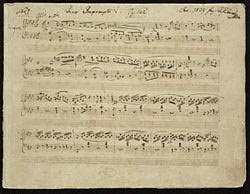
The autograph manuscript of Schubert’s Impromptu in f minor, Deutsch 935 No. 1
To help identify and organise pieces of music by a particular composer, individual compositions or sets of works are usually given an “Opus” number. The word “opus” is Latin and means “work” or “work of art”, often abbreviated as “Op.”, or “Opp.” in the plural. The practice of assigning an “opus number” to a work or set of works when the work or set was published began in the seventeenth century. Opus numbers were not usually used in chronological order and did not necessarily denote when a work was actually composed. Unpublished works often were left without opus numbers.
From the 1800s onwards, Beethoven in particular assigned opus numbers to individual works and sets (including piano pieces, songs and other short works) as they were completed and published: low opus numbers indicate early works, while high opus numbers (for example, the Piano Sonata Opus 110) are works composed and published at the end of Beethoven’s life. Works published posthumously were also assigned high opus numbers, while some works were not given an opus number at all, and were later catalogued in the 1950s as WoO (Werke ohne opus/”works without opus number”). These include the three ‘Electoral’ piano sonatas, written when Beethoven was a very young man, which are not usually included with the main body of the 32 Piano Sonatas (Opus 2 to Opus 111).
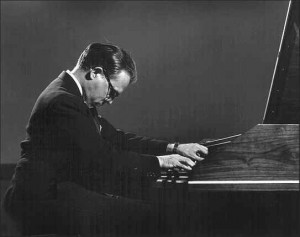
Ralph Kirkpatrick
Not all music has an opus number. The music of Bach is given a ‘BWV’ number, which is an abbreviation of “Bach-Werke-Verzeichnis” (literally, “directory of Bach’s works”), and was the cataloguing system for Bach’s music used by Wolfgang Smieder in the 1950s.
Similarly, Mozart’s music is catalogued with “K numbers” from the name of the cataloguer, Köchel. A low K number indicates a piece written when Mozart was very young, while a high number indicates a piece written at the end of his life. Some people know the works by their K numbers alone (a friend of mine has a remarkable knowledge of Mozart’s works by their individual K numbers).
Ralph Kirkpatrick catalogued the numerous works of Domenico Scarlatti in a facsimile edition, and so these pieces are also given a K number, usually written “Kk” to distinguish it from Mozart’s Köchel number. To make matters slightly more confusing, Scarlatti’s works also have a “Longo number” after Alessandro Longo’s edition for the piano. The Kk and Longo numbers do not correspond, which can make identifying a particular work by Scarlatti tricky; fortunately, there are tables of Kk and Longo numbers available online to help clear up such discrepancies.
Confused? Read on…..
Haydn’s works are generally referred to by their Hob or Hoboken numbers, after the cataloguer Anthony von Hoboken’s classification, though some have Opus numbers alone. The works are also grouped into categories, for example, I for symphonies, or XVI for the piano sonatas. The Piano Sonatas have both a work number and a Hob. number, which, like the works of Scarlatti, make identification more confusing.
Schubert’s works have both Opus and “Deutsch” numbers (after Otto Erich Deutsch’s catalogue). The first set of Impromptus for piano, for example, are both Opus 90 and D899. (I tend to refer to Schubert’s piano music by its D number, because that is how I have always known it.)
Music specialists and academics often also refer to the “autographed score” or “autograph version”. These are original scores, written out by the composer, or transcribed by an assistant, and represent the first finished version, and are important historical documents in the scholarship of a particular composer’s works (over the years, music is subjected to editing; in recent years, scholars have gone back to autographed editions to better understand the composer’s original intentions or to clear up questions of attribution or interpretation). Very occasionally, an original autographed score will come to light, which was previously thought to be lost, or non-existent, which can create a lot of excitement amongst music specialists and academics, as well as fetching significant sums at auction. In 2009, researchers unearthed two pieces of music thought to have been written by Mozart when he was still a boy, and in 2012 a ‘new’ piece by Mozart was premiered, after an autographed notebook was found in the attic of a house in Austria.
The 50th Schubertiade Anniversary Celebration Celebrating Gerd Nachbauer’s Founding Dream
In 2025, the Schubertiade festival celebrates its 50th anniversary, marking half a century of devotion to the music of Franz Schubert and the rich tradition of chamber music and lieder. What began as a modest series of concerts in the quaint Austrian town of Hohenems has blossomed into one of the world’s most prestigious and beloved musical events.
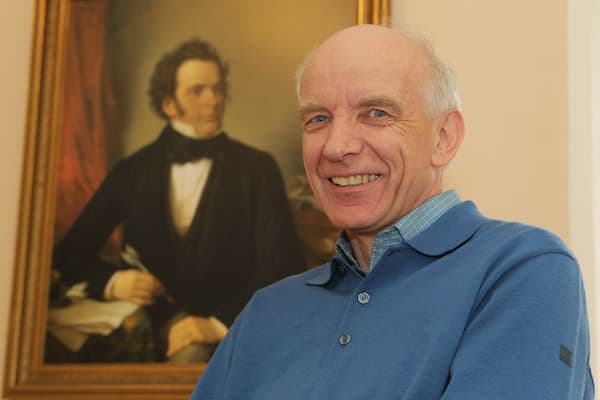
Gerd Nachbauer © Bernd Hofmeister
To be sure, the festival has grown from intimate gatherings into a global phenomenon, drawing tens of thousands of music lovers annually to experience its unique blend of exceptional performances and idyllic Alpine settings.
To celebrate this golden jubilee of enduring appeal and unwavering commitment to artistic excellence, Interlude spoke to Gerd Nachbauer, who founded the Schubertiade Hohenems alongside Hermann Prey in 1976.
Prégardien/ Drake: “Schubertiade Hohenems 2022”
Origins

The first Schubertiade Hohenems, 1976
It all started with Gerd Nachbauer inviting Hermann Prey to participate in a small yearly festival situated in the town of Hohenems. As Nachbauer explained, “during the planning phase of a song recital scheduled for June 1975, Hermann Prey’s secretary Christian Lange suggested that this concert could serve as a test for a larger project associated with the names Prey and Schubert.”
This initial proposal for a concert linking Prey with Schubert’s music planted the seed that eventually blossomed into the renowned Schubertiade. The principle aim was to present Schubert’s complete oeuvre over a period of 12 years. After 2 years of planning, the first Schubertiade began on 8 May 1976 with a song recital by Hermann Prey accompanied by Leonard Hokanson.
Rennert/Johnson: “Schubertiade Schwarzenerg 2022”
Vision
The original vision foresaw the performances of the complete Schubert oeuvre in chronological order. For obvious reasons, this idea was not entirely practical nor feasible, and the primary emphasis remained on solo performances. In essence, the early years of the Schubertiade focused on simplicity and on communicating the intimacy of Schubert’s solo vocal compositions.
Nevertheless, the idea of bringing Schubert’s unknown or then-inaccessible compositions to the general public persisted. As Gerd Nachbauer noted, “a significant portion of Schubert’s compositions had remained under the radar,” and the Schubertiade now offered a vital channel to share these works with a wider audience. One aspect of that vision was to showcase Schubert’s music in larger concert halls, expanding beyond the traditional limits of smaller venues.
Youn/Karg/Bedenko: “Schubertiade Hohenems 2018”
Venue Choices
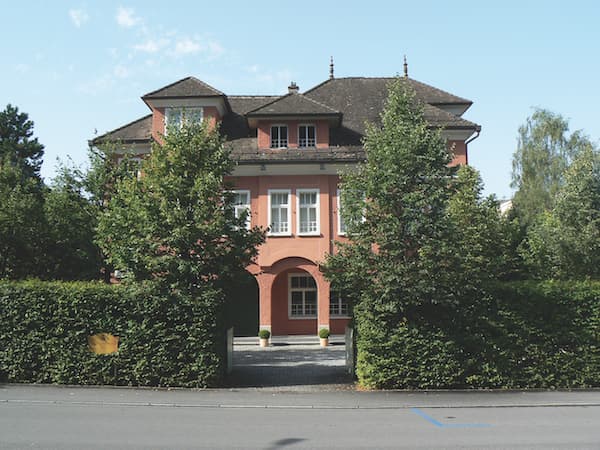
Markus Sittikus Hall in Hohenems, Austria
Currently, the Schubertiade is held in two unique locations, in Hohenems and Schwarzenberg. Establishing these venues, however, was no small task. The Markus Sittikus Hall, named after the Salzburg prince-archbishop Markus Sittikus von Hohenems, is housed in a building dating from 1913. It was completely renovated by the Schubertiade, and as Gerd Nachbauer explained, “on account of its acoustical qualities, it is now one of the world’s best halls for the performance of chamber music and Lieder.”
The idyllic village of Schwarzenberg has been an important venue for the Schubertiade since 1994. The “Angelika Kauffmann Hall” is named after the exceptional Neoclassical painter whose father brought her to their ancestral home in Schwarzenberg following her mother’s death. Kauffmann is one of only two female painters among the founding members of the Royal Academy in London, and the hall in her honour is built in a simple timber construction and also offers perfect acoustic conditions. In fact, its fantastic sound properties have been compared to London’s Wigmore Hall.
Arcayürek & Bushakevitz: “Schubertiade Schwarzenberg 2024”
Cultural Frame
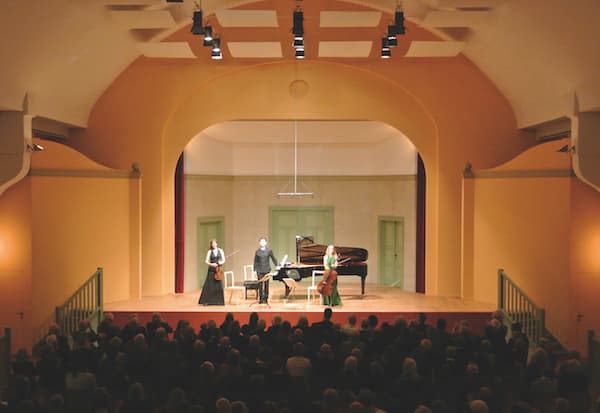
A chamber music concert in Markus Sittikus Hall
Over the last 5 decades, the Schubertiade has grown from an intimate celebration of Franz Schubert’s music into a renowned international event, drawing musicians, scholars, and enthusiasts to its locations in Hohenems and Schwarzenberg. It has evolved into an organic event of creativity fuelled by the dedication of Gerd Nachbauer, artists, and the community.
This organic development extends beyond the festival proper to a collection of museums that naturally complement the musical focus. Established by Gerd Nachbauer, the Schubert Museum offer immersive explorations of Schubert’s life, works, and reception, while the Elisabeth Schwarzkopf, Walter Legge, Stefan Zweig and Nibelungen Museums enrich the cultural tapestry with festival-related and local heritage.
Schubertiade 2025
Franz Schubert’s music, for Gerd Nachbauer, “goes straight to the heart, and conveys something deeply moving and emotionally resonant.” The 2025 Schubertiade is set to celebrate Nachbauer’s founding dream and Schubert’s enduring legacy.
Interlude will be on site for the Schubertiade Hohenems from 10-14 July 2025; please check back soon and often for updates, interviews, concert reviews, and festival-related activities.
What Makes a Good Concert?
To me, a good concert experience = a good performance + organiser + audience + community.
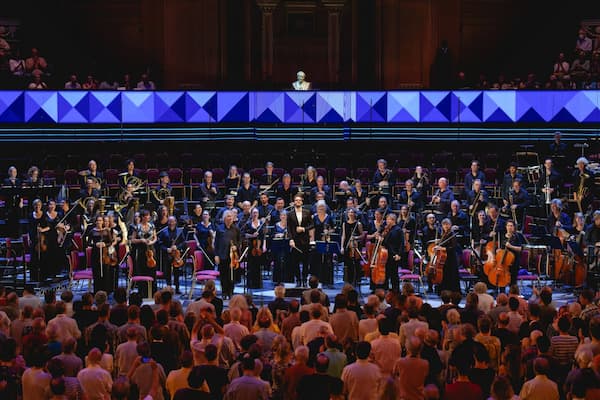
Berlioz’ Les Troyens at the BBC Proms 2023 © Andy Paradise
A good concert experience is the product of several key components: performance, organiser, audience, and community. Each element plays a pivotal role in shaping how we perceive and experience live music. Here’s a closer look at what makes a concert experience truly memorable.
1. Performance
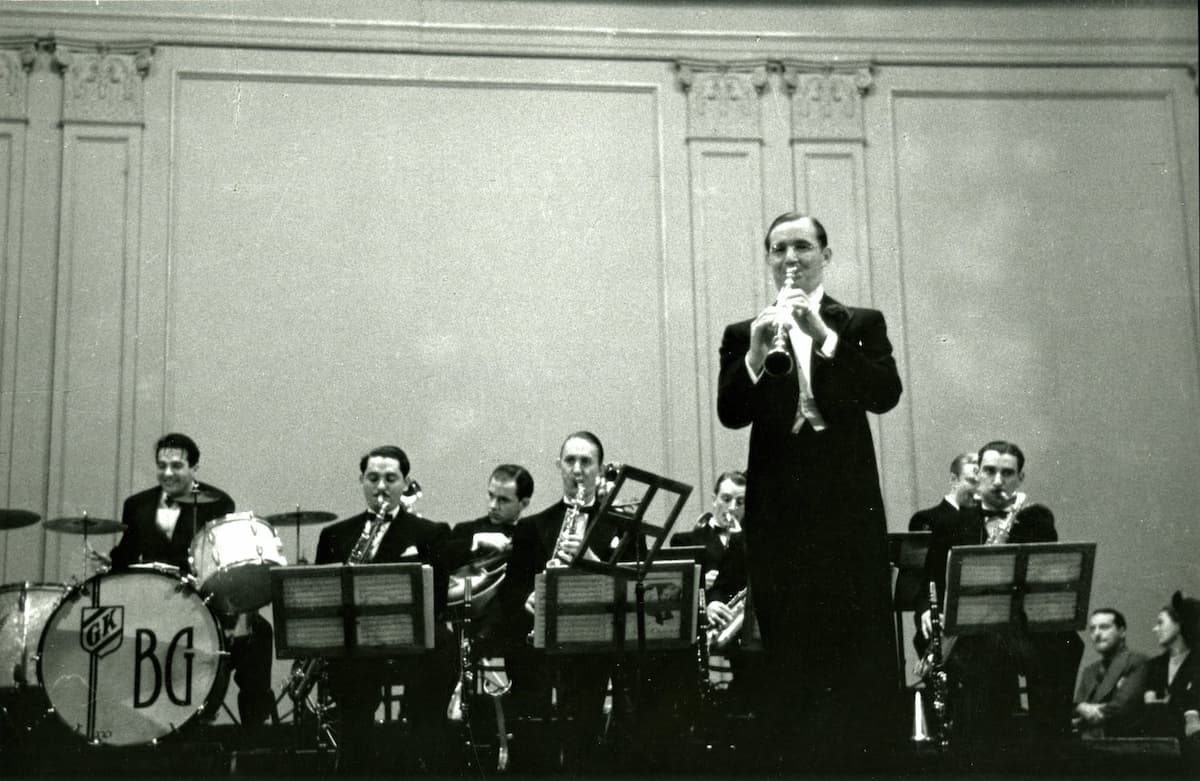
Benny Goodman’s Carnegie Hall Concert in 1938
It goes without saying that an exceptional performance is essential for a great concert experience, but it requires more than just a musician with technical versatility and expressive depth. It also requires a thoughtfully curated programme that speaks something – whether theme-based, internally linked, or contrasting – and highlights the performer’s artistic strengths.
To stop stating the obvious, I’ll dedicate the remaining length to the other components of a good concert experience.
2. Organiser
Equally important is an organiser that has a genuine love and respect for music beyond financial considerations. This dedication is self-evident in the curation of the concert – from the choice of artists, programming, and marketing, to related events, and the actual execution of the concert.
While it is exciting to see big names visiting our hometown, I particularly appreciate organisers who take risks by inviting lesser-known but equally wonderful musicians who have something unique to say. Similarly, the programme is often a mutual decision between the artist and organiser, and it takes courage to include an unconventional repertoire.
As far as marketing and concert-related events are concerned, it would be pretentious to deny or neglect the importance of the box office, but we should also aim to help the music and musicians reach a wider audience and on a deeper level. When it comes to pre-concert engagement, there are different ways to engage the audience beyond traditional, didactic lectures. Social media posts featuring music excerpts, interviews, introductions to the programme, or intellectually stimulating dialogues with artists can all help build anticipation and foster appreciation for the music.
Music in Words with Paul Lewis: Performing Schubert
As for the actual concert itself – call me a nit-picker – everything matters, from the ushers’ professionalism and the venue (acoustics, seating), to seemingly small details like the programme notes and when latecomers are admitted. For instance, I will never forget a concert where latecomers were allowed to enter after the first movement of a symphony – it’s just unforgivable. Programme notes, too, should be at least factually accurate; even better, they should enrich and educate, i.e. not merely “the piece begins in B major, and then modulates to E major…”, which means little, if anything, to most listeners.
3. Audience

1846 concert showing audience with program notes © Wikipedia
While I’m against the idea that concerts should be treated as sacrosanct occasions or that everybody should wear a tuxedo to a concert, each and every concert experience should be treasured. The Japanese idiom ichi-go ichi-e is roughly translated as “one time, one meeting” or “for this time only”. It is a concept of cherishing the unrepeatable and ephemeral nature of a moment. The same applies to concerts, which is, to me, the essence of music-making.
By treasuring the experience, I mean being attentive, respectful and immersed in it. While incessant coughing, chitchatting, or dropping items like phones or booklets is obviously irritating, it’s probably even more annoying when a few people feel pathologically compelled to applaud as the last note is still reverberating in the hall.
4. Community
A concert experience shouldn’t end when the final note fades. A concert, whether good or bad, should spark some sort of discussion afterwards, such as through social media posts, formal reviews, radio podcasts, or in-person conversations.
While we are entitled to our opinions, the aim is not to validate or to refute them – rather, it creates a space to process emotions, gain new insights, and (re)create a communal joy. A vibrant musical community has the power to transform a concert from an isolated event into a shared cultural experience, enriching the concert experience per se.
Now, go enjoy a concert and make some noise – but only after the last note has faded.
The German-born English composer George Frideric Handel (1685-1759) is widely regarded as one of the greatest musical masters of his era. Indeed, his extraordinary talent and relentless dedication significantly shaped the landscape of classical music during the Baroque era.

Portrait of George Frideric Handel by Thomas Hudson, 1756
He began his musical journey in Halle, Germany, and honed his skills in Italy before settling in England. Renowned for his operas, oratorios, and instrumental works, Handel masterfully blended German, Italian, French, and English musical traditions into a distinctive and influential style.
Handel showcased his genius for dramatic storytelling and musical innovation throughout, and while his posthumous fame largely rested on a few orchestral works and the oratorio Messiah, Handel excelled in every musical genre of his time.
To commemorate his passing on 14 April 1759 at the age of 74, we decided to celebrate his legacy as one of history’s most towering musical figures.
Halle and Hamburg
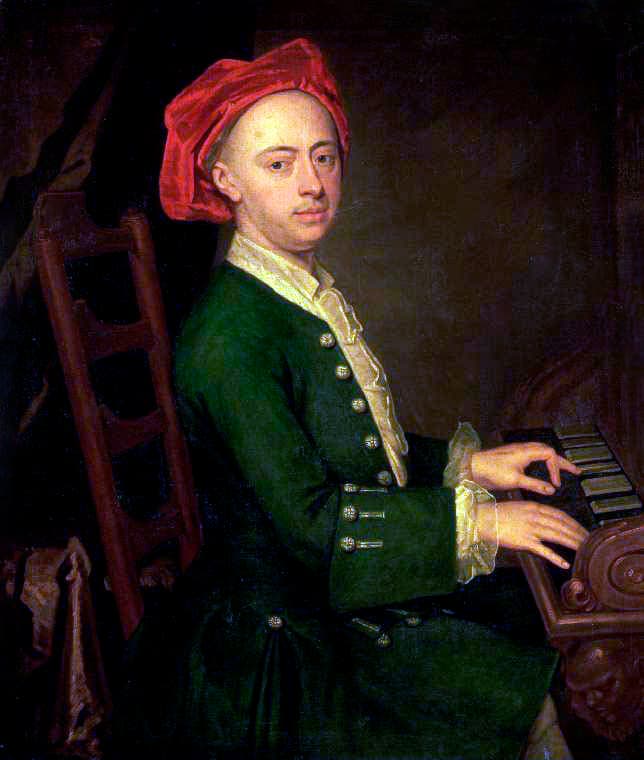
George Frideric Handel
Georg Händel was born to a barber-surgeon and his wife Dorothea Taust on 23 February 1685. His father wanted him to take up a legal career, but the boy secretly practiced and received musical training from Friedrich Zachow. When he was not quite 12, his father died and left him with family responsibilities. He briefly enrolled at the University of Halle in 1702 before becoming organist at the Domkirche. He also visited Berlin, where he first encountered opera and the composer Giovanni Bononcini. Inspired, he left Halle for Hamburg in 1703.
Handel joined the city’s independent opera house as a violinist and harpsichordist in 1703, working under Reinhard Keiser’s influence. He befriended Johann Mattheson, with whom he fought a brief duel in 1704, and he began composing when Keiser’s absence created opportunities. His first opera, Almira of 1705, was a success, followed by the less successful Nero. In the event, Handel absorbed Keiser’s eclectic style of blending German, French, and Italian elements, which decisively shaped his future operatic works.
Italy
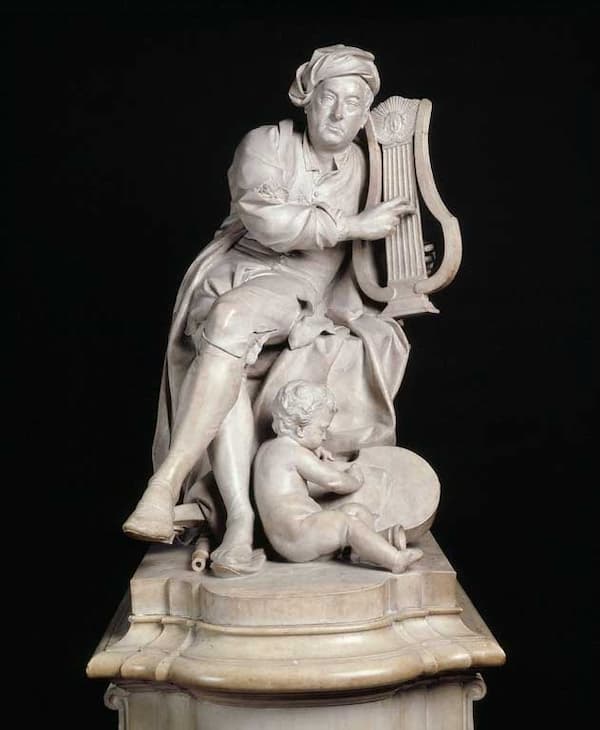
Marble statue of Handel, 1738
While in Hamburg, Handel met visiting musicians who introduced him to Italian music and encouraged him to travel to Italy. Visiting Florence and Venice, Handel arrived in Rome by early 1707 and honed his craft under the influence of composers such as Arcangelo Corelli and Alessandro Scarlatti. His talent quickly earned him the favour of both ecclesiastical and secular princes, and he composed his first opera, Rodrigo, in 1707.
His opera Agrippina, of 1709 triumphed in Venice and solidified his fame with its brilliant arias and dramatic flair. Always the diplomat, Handel navigated elite circles without compromising his independence, and his Italian interlude fuelled his ambition and equipped him with the tools to revolutionise music across Europe. A scholar writes, “Handel’s Italian experience refined his style, blending elegance and dramatic skill, and setting the stage for his later successes.”
Towards London

Covent Garden Theatre
Searching for new opportunities, Handel travelled north and arrived in Hanover in 1710, where he was appointed Kappellmeister at the electoral court. He certainly delighted the Electress Sophia and the later King George II with his harpsichord skills. Since his appointment allowed for travel, Handel first arrived in Düsseldorf, and by autumn 1710, he had made his way to London.
Italian opera had taken London by storm, while all-sung English opera faltered as Italian works and singers, particularly castratos became all the rage. The Queen’s Theatre in the Haymarket became London’s opera hub, and Handel joined an all-Italian opera company. Rinaldo, his first opera tailored for London, premiered on 24 February 1711. The opera was an immediate success, with contemporary audiences praising “the charms of the music and the splendours of the spectacle.
Cannons
In the summer of 1717, Handel started to work for James Brydges, Earl of Carnarvon, later the Duke of Chandos, at his new mansion, Cannons. During a short but productive period, he composed 11 anthems that, according to scholars, “were unique in English church music.” Significantly, Cannons also saw the completion of the first English oratorio. Esther adapted a biblical drama and reused music from an earlier score.
The Royal Academy of Music
The Royal Academy of Music was founded in February 1719 during Handel’s residence at Cannons. The primary aim was to secure a constant supply of opera seria, with Handel appointed to engage soloists and to initially provide libretti and some arrangements. Handel’s first season at the RAM was a huge success. By staging Rinaldo, Teseo, Amadigi, and Radamisto, he had quickly reached the commanding position he sought.
In fact, Handel considered the aria “Ombra cara” from Radamisto his finest melody ever. And he was closely involved in general administration and the engagement of singers, made decisions on scenery and staging, and rehearsed the orchestra and the singers. The directorate of the Academy, however, did not want to back Handel exclusively, and their choice of resident composer fell to Giovanni Bononcini, who arrived in London in the autumn of 1720.
Operatic Seconds and Covent Garden

Carriera: Portrait of Faustina Bordoni Hasse (1730s) (Museo del Settecento Veneziano, Ca’ Rezzonico, Venice)
Over time, Bononcini’s position gradually weakened, and Handel’s influence boosted. The 1723/24 season saw a resounding triumph of Giulio Cesare, and the masterworks Tamerlano (1724) and Rodelinda (1725) marked the Academy’s artistic peak. However, the arrival of soprano Faustina Bordoni in 1726, rivalling Francesca Cuzzoni, created an atmosphere of animosity, and the RAM collapsed at the end of the 1728/29 season.
Handel was undeterred and quickly started a “Second Academy of Music.” He continued to travel to Italy to engage new singers, and he composed several more operas at home. With the rise of John Gay’s The Beggar’s Opera, Handel also came under attack for being a foreigner. In all, Handel composed about 30 operas for the Royal Academy. Still, when a new theatre at Covent Garden opened in 1732, he shifted operations to the new location for two nights a week.
Oratorio
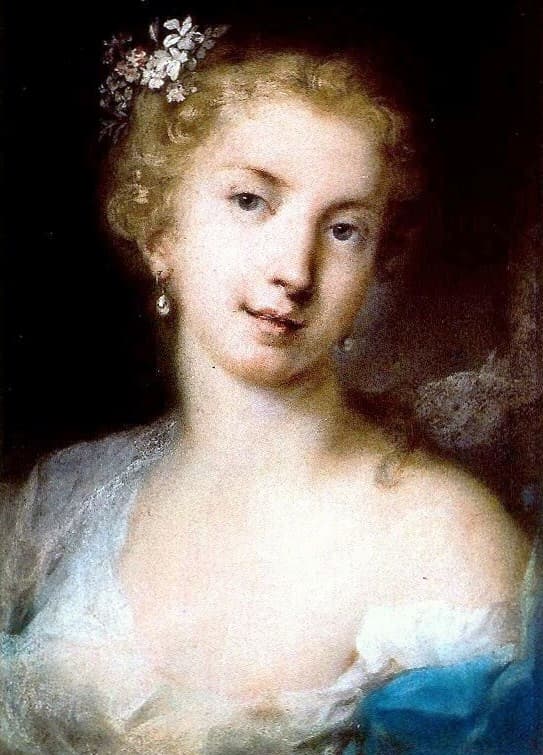
Francesca Cuzzoni
Handel faced shifting public tastes and financial difficulties in London during the 1730s, as Italian opera seria began to lose favour with audiences. This prompted him to pivot toward a new medium, the English oratorio. Combining his operatic flair with a focus on sacred or dramatic narratives, Handel adapted to the cultural and religious sensibilities of his English audience, who preferred works in their native language and were wary of theatrical excess in religious contexts.
His oratorios, a genre he practically invented, were performed in concert settings without staging or costumes, making them more accessible and cost-effective while still delivering emotional depth and musical grandeur. The rise of the oratorio became a cultural phenomenon, and it revitalised his career. In fact, Handel’s oratorios bridged the gap between sacred music and public entertainment, and thus cemented his legacy as a transformative figure in Western music.
Final Musical Thoughts
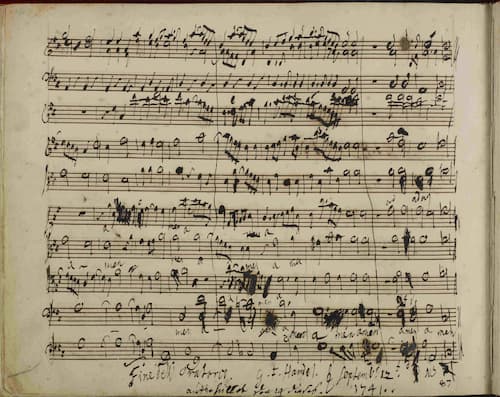
Handel: Messiah – Part III: Amen
Handel continued to refine and expand the oratorio form, producing some of his most enduring and sophisticated works despite facing significant personal and health challenges. After the triumph of Messiah in 1742, Handel’s late oratorios, such as Samson (1743), Belshazzar (1745), Judas Maccabaeus (1747), and Jephtha (1752), showcased his mastery of dramatic storytelling and musical innovation. Although his eyesight began to fail, his creative output remained remarkably robust, driven by his unrelenting passion and adaptability.
His final years were marked by both physical decline and an enduring public presence. After undergoing unsuccessful eye surgeries, he increasingly relied on assistants to notate his compositions, yet he continued to perform, often improvising at the organ during oratorio performances to the delight of the audience. Just days before his death on 14 April 1759, he attended a performance of Messiah at Covent Garden.
Personality, Style and Legacy
As contemporaries report, Handel was a “large, portly man with a sauntering gait and a mix of irascibility, humour, and good-heartedness.” Honest and reliable in financial dealings, he balanced artistic ideals with the needs of individual singers, adapting compositions while showing mixed attitudes toward fellow composers. And a scholar writes, “socially reserved, he enjoyed a private circle, supported charities, and, despite coarse habits like swearing and overeating, was cherished as a genius until retreating into privacy in later years.”
Handel’s music is characterised by its dramatic intensity, melodic richness, and a masterful blend of emotional depth and structural clarity. It displays a remarkable adaptability, consolidating the characteristics of the leading European styles of his day. His works often balance intricate polyphony with straightforward, singable melodies, making them appealing to both sophisticated listeners and broader audiences. Across all genres, Handel’s music is defined by its accessibility, emotional resonance, and enduring versatility.
Handel’s legacy endures, with his contributions influencing generations of composers and performers. Works like Messiah remain cultural touchstones, performed worldwide and cherished for their universal appeal and spiritual depth. Handel’s ability to blend technical brilliance with profound emotion ensures his continued iconic status, equally eliciting scholarly advocacy and the enthusiasm of practical musicians around the world.
Thursday, April 17, 2025
Jesus Christ Superstar | Gethsemane (I Only Want to Say)
Monday, April 14, 2025
Vanessa-Mae - Storm (Official Video)
 / vanessamaeofficial
/ vanessamaeofficial
 / vanessamaemusic
/ vanessamaemusic
 / vanessamaemusic
Storm, from Vivaldi's Four Seasons
/ vanessamaemusic
Storm, from Vivaldi's Four SeasonsSunday, April 13, 2025
André Rieu's Son Says Goodbye After His Father's Tragic Diagnosis
Friday, April 11, 2025
The Doomed City: Lalo’s Overture to Le Roi d’Ys
by Maureen Buja , Interlude
Édouard-Victoire-Antoine Lalo (1823 –1892) started his musical career as a viola and violinist, studying at the Paris Conservatoire with François Antoine Habeneck, who had founded and led the Orchestre de la Société des Concerts du Conservatoire from 1828. After graduation, Lalo taught strings in Paris and founded the Armingaud Quartet, in which he first played viola then second violin.
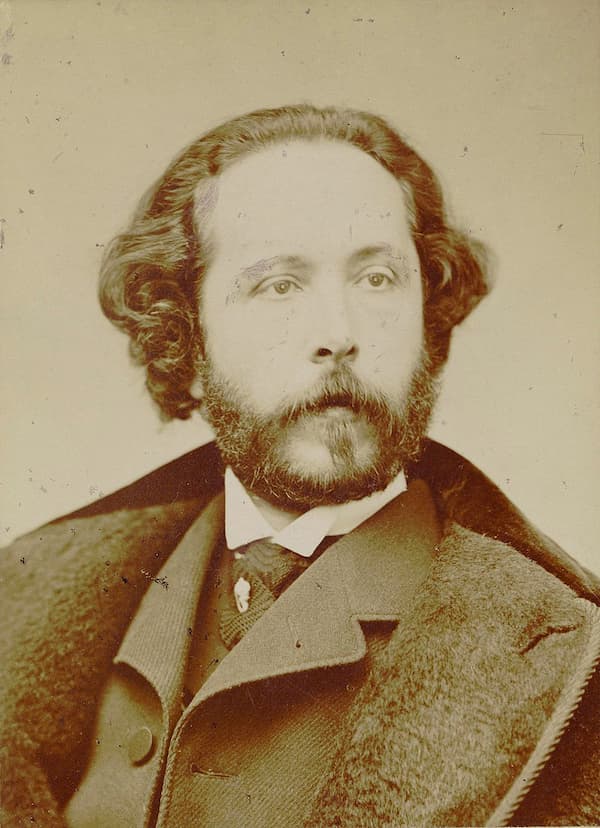
Pierre Petit: Édouard Lalo, ca 1865 (Gallica: btv1b8421663h)
His marriage in 1865 to contralto Julie Besnier de Maligny, led to his interest in writing operas and other works for the stage, most notably, Le Roi d’Ys. The opera had its premiere at the Opéra-Comique in the Salle du Châtelet in Paris in 1888.
The story, taken from old Breton legend, tells of Margared, daughter of Gradlon, the King of Ys. As part of a peace treaty, she’s engaged to Prince Karnac but she tells her sister Rozenn that she really loved Mylio, who sailed from Ys some years ago. In the middle of her wedding ceremony to Karnac, she hears that Mylio has returned and refuses to marry Karnac, who vows revenge at the humiliation.
Mylio, unfortunately, loves Rozenn, not Margared, and persuades Gradlon to grant him Rozenn’s hand in marriage. Jealous, Margared joins forces with Karnac to wreak their joint vengeance.
During Rozenn and Mylios’s wedding ceremony, Karnac, with the help of Margared, opens the sluice gates that protect the city of Ys from flooding and dooms the city. Mylio kills Karnac but it’s too late. Half the city’s population drowns as the waves overcome the city. Filled with remorse, Margared throws herself into the ocean as a sacrifice and the patron saint of the city, St Cornentin, calms the waves and saves the city.
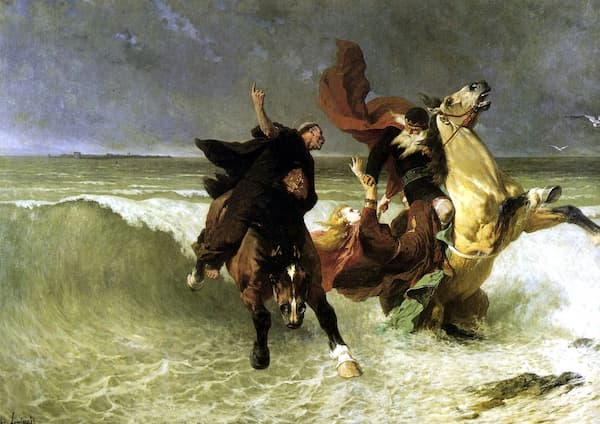
Évariste Vital Luminais: Flight of King Gradlon (the King of Ys), 1884 (Musée des beaux-arts de Quimper)
The overture sets the scene for the tale of mistaken love, jealousy, and treachery and remains one of the most popular parts of the opera that still remains in repertoire.
Lalo’s operas were interesting and original but were criticised for being too progressive and for being ‘too Wagnerian’ in style. Although his stage works were popular during his life, they quickly fell out of repertoire. Lalo eventually turned towards chamber music and symphonic music for his repertoire. His Symphonie Espagnole remains in performance, as does his Cello Concerto in D minor.

Piero Coppola
This recording was made in 1930 with the London Symphony Orchestra, conducted by Pierro Coppola. Italian composer and conductor Coppola studied in Milan and conducted at La Scala. Hearing Debussy conduct in 1911 made him a life-long fan of Debussy and Ravel, and French music was how he made his name. Between 1923 and 1934, he was the artistic director of La Voix de son Maître, the French branch of The Gramophone Company.

La Voix de son Maître, and the dog Nipper
At La Voix de son Maître , he conducted the first recordings in the 1920s and 1930s of Debussy’s and Ravel’s works, including La mer and Boléro.

Performed by
Piero Coppola
London Symphony Orchestra
Recorded in 1930
Official Website


